

Grape hyacinth, or muscari, is very cute short bulb flower.
Key Grape Hyacinth facts
Name – Muscari or Grape hyacinth
Family – Asparagaceae
Type – spring bulb
Height – 6 to 8 inches (15 to 20 cm)
Exposure – full sun
Soil: ordinary – Flowering: early spring
Caring for grape hyacinth from planting to blooming is easy and its ornamental effect is guaranteed.
→ Also: growing common hyacinth
Get the planting of your Muscari bulbs right because the blooming depends on how well it’s done.
These bulbs must be planted in fall.
Plant them in large groups to form clustered spots of color.
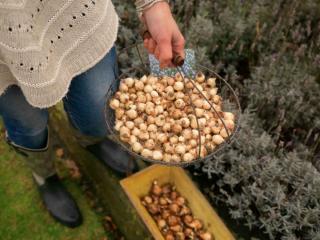 You can spread them across different exposure levels in various parts of the garden, this will stage their blooming.
You can spread them across different exposure levels in various parts of the garden, this will stage their blooming.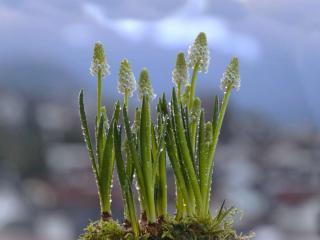
Simply follow the same steps described above, but use regular flower plant soil mix instead of garden soil.
After the blooming wilts away, keep the grape hyacinths in the pot until the leafage also turn yellow and dries out completely.
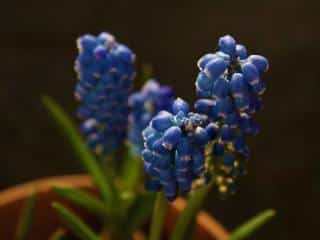
For grape hyacinths grown in pots, remember to water as soon as the surface soil is dry.
The following best practices will help you have beautiful sustained blooming over the years.
It’s important to water during the phase that leads to blooming: from sprouting to the moment flowers wilt.
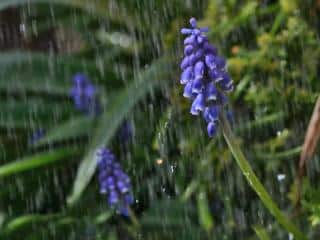 In the ground: if there’s no rain during this time, water every 3-4 days, in moderate amounts.
In the ground: if there’s no rain during this time, water every 3-4 days, in moderate amounts.Once flowers have dropped or are forming seeds, you don’t need to water as much. Too much water at this stage will quickly lead to bulb rot.
In any case, make sure the soil drains well: it shouldn’t stay soggy. If it does, consider raising your grape hyacinths up a bit (6 inches or 15 cm is fine) so excess water drains to the side.
This little plant is special for its cute small bell-shaped flowers. It is perfect for flower beds, along edges, or in rocky ground.
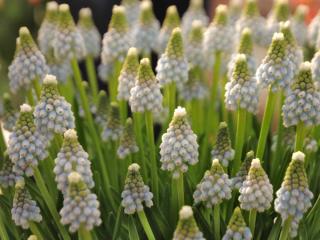
There are other amazing grape hyacinth varieties, such as:
Depending on the variety, some grape hyacinths can grow anywhere from 8 to 24 inches (20 to 60 cm), but most grow to an average height.
Grape hyacinths are often available in flower shops for indoor blooming in winter, but these are usually forced. This forcing makes them bloom earlier, but usually weakens them to the point of not being able to survive, even if planted outdoors.
In a garden every year these small flowers will joyfully compete with your narcissus as to who will bear the first flowers of spring!
No need to water, grape hyacinths don’t need it unless they’re indoors where it doesn’t rain!
However, in pots, water as soon as the surface of the soil dries out.